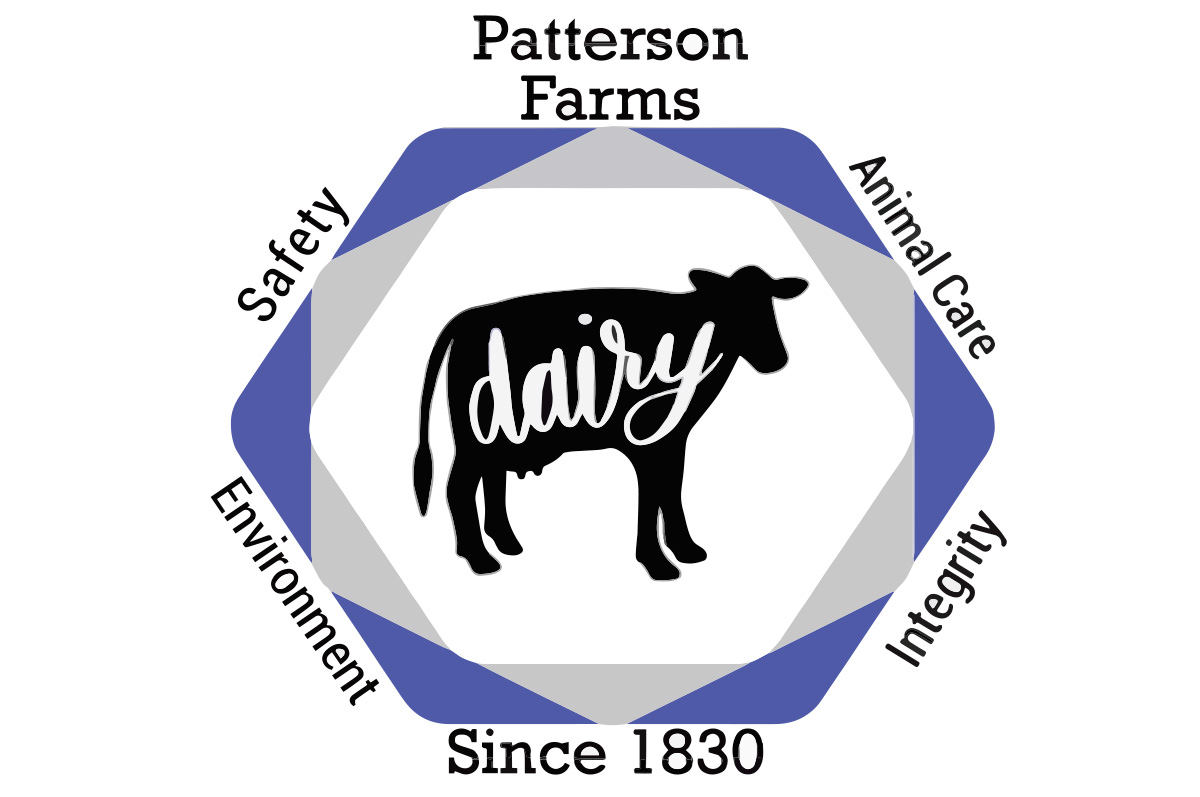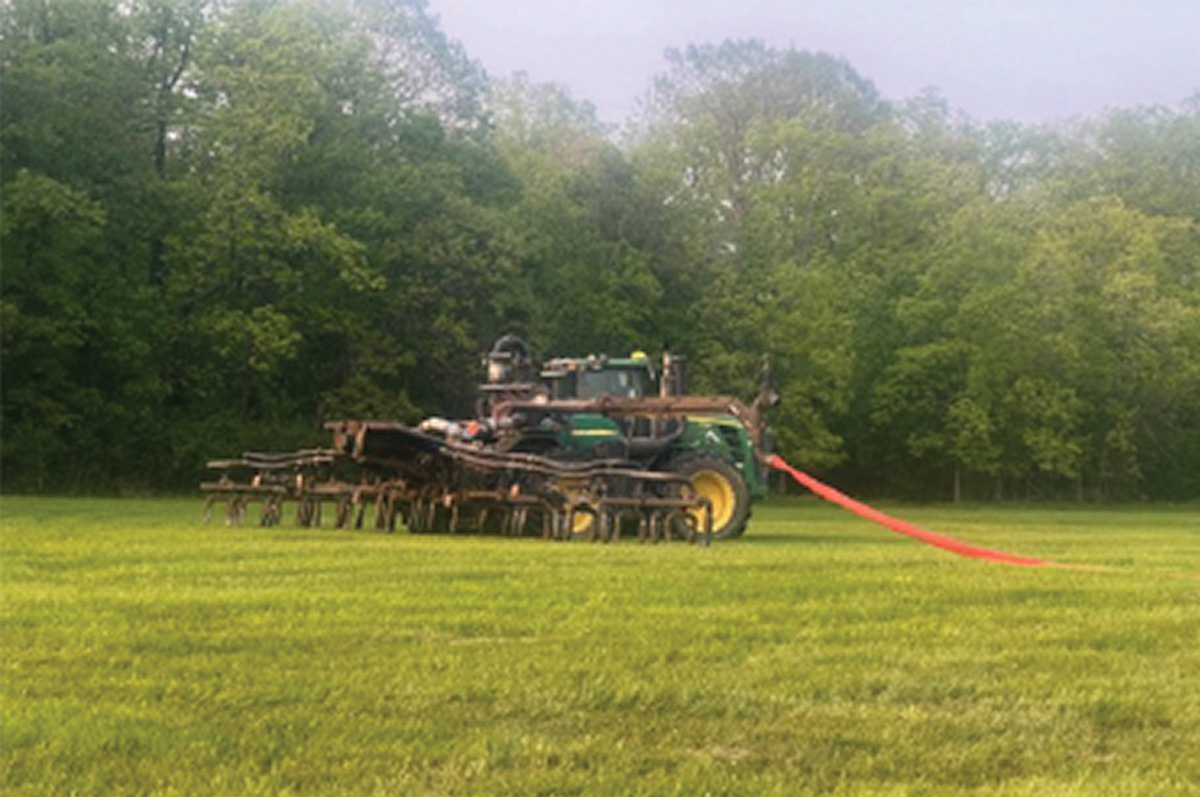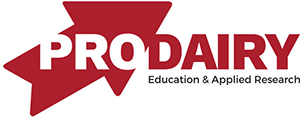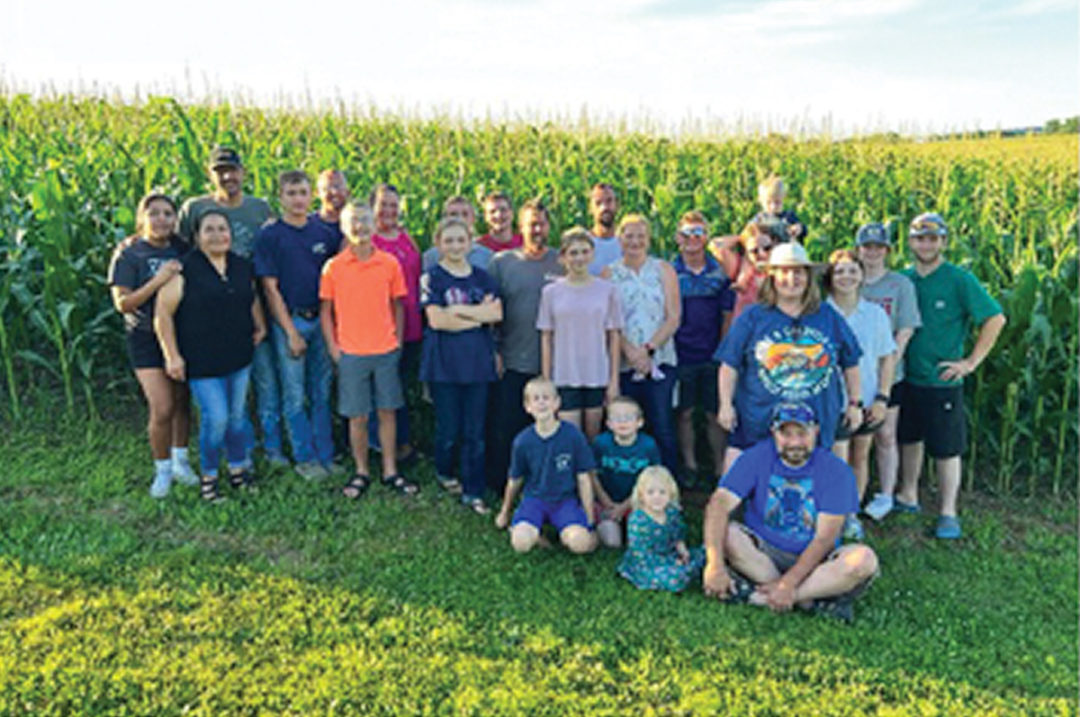Jon and Julie Patterson are the sixth generation to own and operate Patterson Farms Inc. Their dairy farm is in the heart of the Finger Lakes in Cayuga County, New York where they milk 1,800 cows and crop over 3,000 acres. The farm’s core values of Safety, Animal Care, Integrity, and the Environment are lived every day by Jon, Julie, and the farm crew, both on the farm and in the community. While they manage their crops, their cows, and their employees with equal diligence, their manure history tells a story that is indicative of their farm and the progress they’ve made over the last 194 years!
EARLY HISTORY
The home farm was started in 1830 and the 1850 census showed six cows and 150 sheep. The farm grew slowly over the years, and by 1990 Jon’s mother, Connie, was managing the farm and milking roughly 100 cows. After a barn fire that destroyed the milking barn that year, they rebuilt a much larger facility and grew the farm to 350 cows.
1991-1999
When Jon joined the farm as the sixth generation, one of his weekly tasks was to spread manure on the farmland adjacent to the barn. Being close to the eastern shore of Cayuga Lake, the farm family was conscientious about those applications during the winter and early spring, but eventually realized that they would need manure storage to accommodate their growing herd and increasing environmental regulations.
 Patterson Farms Inc.’s core values are Safety, Animal Care, Integrity, and the Environment, as is reflected by the farm’s logo.
Patterson Farms Inc.’s core values are Safety, Animal Care, Integrity, and the Environment, as is reflected by the farm’s logo.1999-2005
At the turn of the millennium, the farm family built their first manure storage facility, a 4.5-million-gallon earthen liquid storage pond, and a manure separation and composting facility where manure solids were composted and used for bedding. Trying to spread the separated liquid on growing crops in the spring and summer created odor concerns. In addition, they found that without organic solids in the manure, it was harder to keep it in the field, so they towed an AerWay toolbar behind the tanker to improve infiltration and built an injector for the tanker. During this time, Jon was also moving the farm towards reduced tillage and other conservation practices to protect soil health and water quality.
2005-2008
With the addition of an anerobic digester in 2005, their odor control was improved. Connie, always a savvy business manager, saw the digester as a way to meet their manure management goals and make it profitable by accepting food waste and selling electricity generated by the digester. It was also during this time that Jon purchased the farm’s first drag hose setup to apply their separate and digested liquid efficiently on the farm’s cropland. At that time, they trucked a lot of manure to fields, and then applied with a drag hose and Gen-Till aerator.
 A dribble bar is the latest piece of manure equipment that allows the farm to quickly and efficiently apply manure close to the soil surface and on growing crops in-season.
A dribble bar is the latest piece of manure equipment that allows the farm to quickly and efficiently apply manure close to the soil surface and on growing crops in-season.2009-2018
Patterson Farm invested in additional storage at the home farm that allowed them to store a total of 14 million gallons of their separated digested manure liquids, and apply it when the conditions were right, and the crops could utilize it most effectively. During this time, they continued to improve their drag hose systems with investments in buried transfer lines, additional pumping and compressor capacity and a no-till manure injector to help keep the manure in place. These efforts did not go unnoticed, as the farm was awarded N.Y. state’s Agricultural Environmental Management Award in 2012.
2019–NOW
The Pattersons are focused on continuous progress in efficiency and productivity of the farm. So, even with all the changes they have made in the previous 30 years, they continue to fine-tune their manure management systems. The digester stopped paying for itself, so instead of continuing to operate it at a loss, they decommissioned the digester, transitioned to sand bedding, and brought all the youngstock back to the home farm with the addition of a new barn in 2023. They increased manure storage capacity with a satellite lagoon.
Having multiple storages not only helps them avoid spreading manure during the winter, but also allows them the flexibility to segregate the sand manure in one pond and keep separated liquids in the other. They also continue to invest in more buried transfer lines, upgrades to supply hoses, and manure application equipment that fits with their conservation cropping systems of reduced tillage and cover crops. Never one to sit back, Jon is always looking for improvements, and he now is targeting more in-season manure applications on corn, cover crops, and hay crops to maximize the nutrient availability of his manure resources.
North American Manure Expo
Want to learn more about manure handling? The Patterson family is hosting the 2024 North American Manure Expo on July 17 and 18, 2024, in collaboration with Cornell CALS
PRO-DAIRY and University of Vermont Extension. Don’t miss it. Tours, demonstrations, workshops, and equipment will highlight safety, innovation, and the latest technology in manure handling. Find out more at North American Manure Expo.
 |
This article appeared in PRO-DAIRY's The Manager in March 2024. To learn more about Cornell CALS PRO-DAIRY, visit PRO-DAIRY. |






